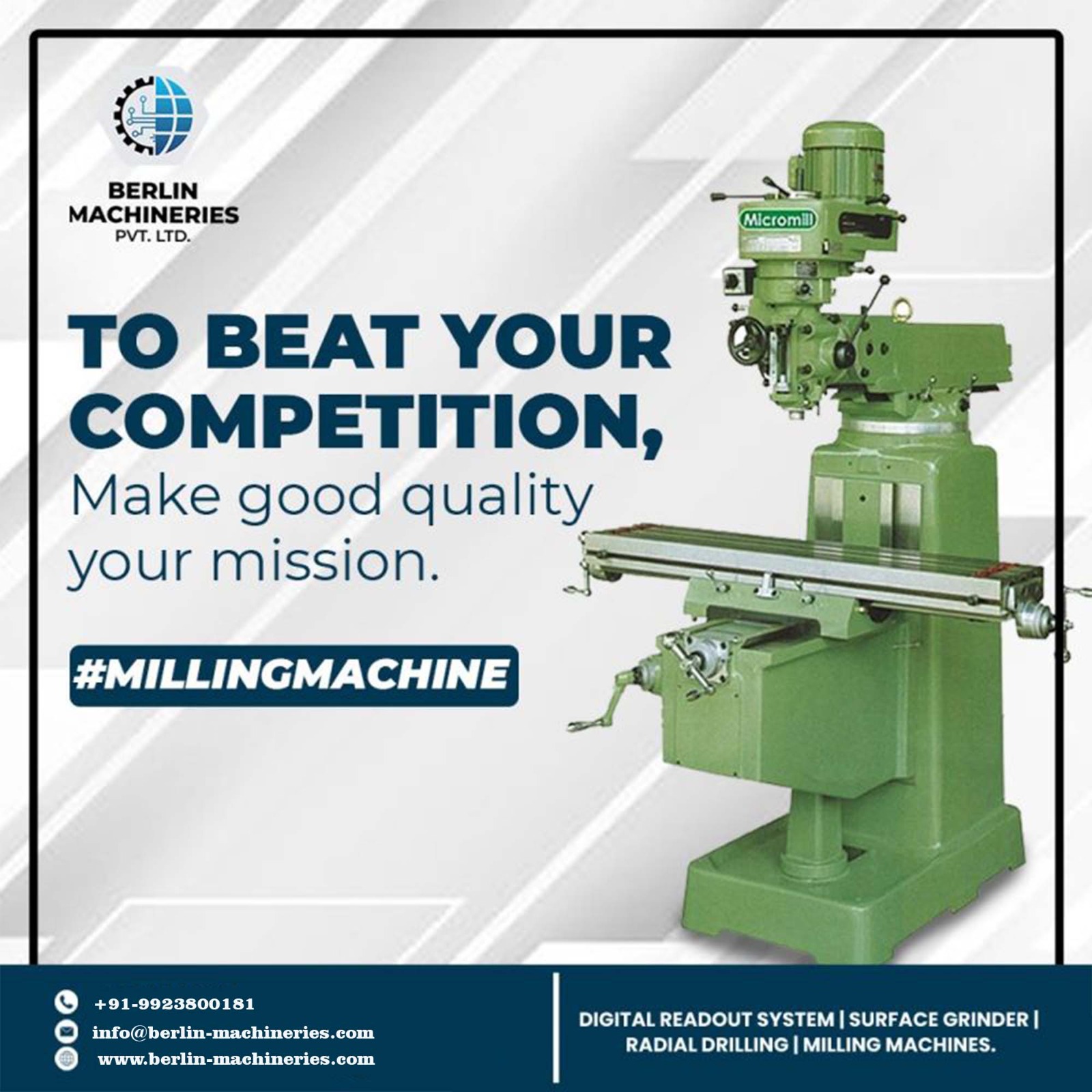Milling Machine
Milling machines are powerful tools used to remove material from a workpiece to create complex shapes, contours, and features. They operate by rotating a cutting tool with multiple teeth, known as a milling cutter, against the workpiece to remove material in a controlled manner. Milling machines come in various types, from simple manual models to advanced CNC (Computer Numerical Control) machines, catering to a wide range of machining needs.
Types of Milling Machines:
- Vertical Milling Machine: Features a vertically oriented spindle, allowing for vertical movement of the cutting tool and easy access to the workpiece. Ideal for tasks such as face milling and drilling.
- Horizontal Milling Machine: Employs a horizontally oriented spindle, enabling horizontal movement of the cutting tool. Suitable for heavy-duty machining operations and producing flat surfaces.
- Universal Milling Machine: Combines the features of both vertical and horizontal milling machines, offering versatility in machining operations and workpiece orientations.
- CNC Milling Machine: Utilizes computer control to automate the milling process, enabling precise and complex machining operations with minimal human intervention.
- Bed Milling Machine: Features a bed that supports the workpiece and moves along the X-axis, providing stability and rigidity for heavy-duty milling tasks.
Key Components of Milling Machines:
- Spindle: Rotating shaft that holds and drives the milling cutter for material removal.
- Milling Cutter: Cutting tool with multiple teeth used to remove material from the workpiece.
- Table: Flat surface where the workpiece is secured for milling operations.
Column: Vertical support structure that houses the spindle and other machine components.
- Knee: Vertical adjustment mechanism that raises or lowers the table for vertical milling operations.
- Control Panel: Interface for controlling spindle speed, feed rate, and other machining parameters.
- Power Feed: Automatic feeding mechanism that moves the workpiece or cutting tool along the axes of motion for uniform material removal.
Applications of Milling Machines:
- Precision Machining: Producing intricate parts and components with tight tolerances and fine surface finishes for aerospace, automotive, and medical industries.
- Mold and Die Making: Manufacturing molds, dies, and tooling components for injection molding, stamping, and extrusion processes.
- Prototyping: Creating prototypes and small-batch production runs of custom-designed parts and products for research and development purposes.
- Maintenance and Repair: Performing repairs, modifications, and refurbishments on existing parts and equipment in industrial and manufacturing settings.
- Education and Training: Providing hands-on learning experiences for students and apprentices to develop machining skills and understand manufacturing processes.
Advantages of Milling Machines:
- Versatility: Capable of performing a wide range of machining operations on various materials and shapes, eliminating the need for multiple specialized machines.
- Precision: Offers exceptional accuracy and repeatability in machining operations, ensuring consistent quality and dimensional accuracy of finished parts.
- Efficiency: Enables high-speed material removal and rapid tool changes, resulting in increased productivity and reduced machining time.
- Flexibility: Allows for customization and adaptation to different machining requirements and workpiece geometries.
- Cost-effectiveness: Provides a cost-efficient solution for small to medium-scale machining tasks, reducing the need for outsourcing and improving workflow efficiency.
